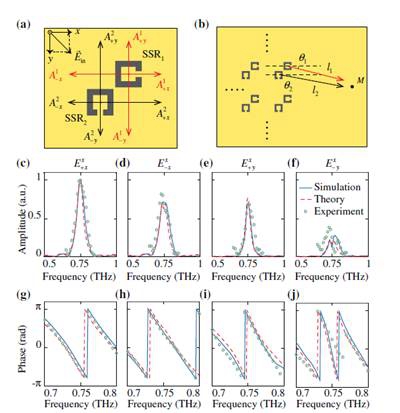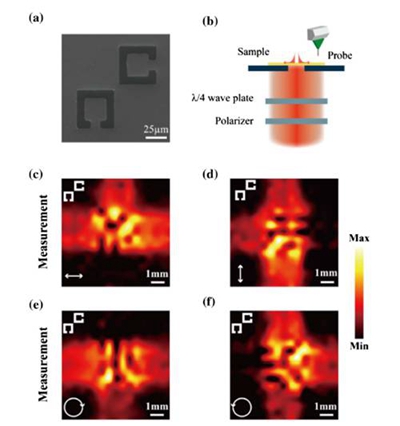






Advances inpolarization-controlled asymmetric excitation of surface plasmons
Recently, under the support of the Ministry of Education's National Key Basic Research and Development Program of China (973 Program) "New terahertz source, receiver and other key functional devices and applications" (ID: 2014CB339800), researchers from Tianjin University, Oklahoma State University, King Abdullah University of Science and Technology, have made important progress in the study of polarization-controlled asymmetric excitation of surface plasmons, and the terahertz research group of interfacial water division of our institute has participated in some of the work. Related research results are published in the flagship journal Optica under the American Optical Society (OSA). (Optica Vol. 4, Issue 9, pp. 1044-1051 (2017) https://doi.org/10.1364/OPTICA.4.001044)
Surface plasmons (SPs)is a special surface electromagnetic wave that exists at a metal-dielectric interface. With the rapid development of plasma science, SPs has shown great application prospects in various fields, such as super light transmission, high spatial resolution imaging, waveguide transmission and biochemical sensing etc.. Especially in highly integrated electronic photonic composite circuits, which is due to the fact that the SPs have a subwavelength scale resolution that can reduce crosstalk and further reduce the size of the integrated circuit. If the emission direction of SPs can be well controlled, it will play a significant role in the development of functional devices for SPs.
This process has traditionally faced challenges in preserving the incident polarization information andcontrolling the directionality of the excited SPs.The recently reported polarization-controlled asymmetric excitation of SPs in metasurfaces has attracted much attention for its promise in developing innovative plasmonic devices.However, the unit elements in these works were purposely designed in certain orthogonal polarizations, i.e., linear or circular polarizations, resulting in limited two-level polarization controllability. Here, we introduce a coupled-mode theory to overcome this limit.
We demonstrated theoretically and experimentally that, by utilizing the coupling effect between a pair of split-ring-shaped slit resonators (SSR), as shown in Fig. 1, exotic asymmetric excitation of SPs can be obtained under the x-, y-, left-handed circular, and right-handed circular polarization incidences, while the polarization information of the incident light can be preserved in the excited SPs. Fig. 2 and Fig. 3 are the theoretical analysis of the design structure and the results of the terahertz scan imaging experiment.The versatility of the presented design scheme would offer opportunities for polarization sensing and polarization-controlled plasmonic devices.
Part of the experiment utilizes the terahertz imaging and detection experimental platform at the Shanghai Institute of Applied Physics, which is attached to the large instrument area center of the Chinese Academy of sciences. Based on the platform, the incident wave state is easy to adjust, and the amplitude and phase information of the surface wave can be recorded at the same time. It can be used to measure the propagation of terahertz surface waves, can directly describe the propagation state of terahertz surface waves excited by the structure, which provides the basis for theoretical design.


